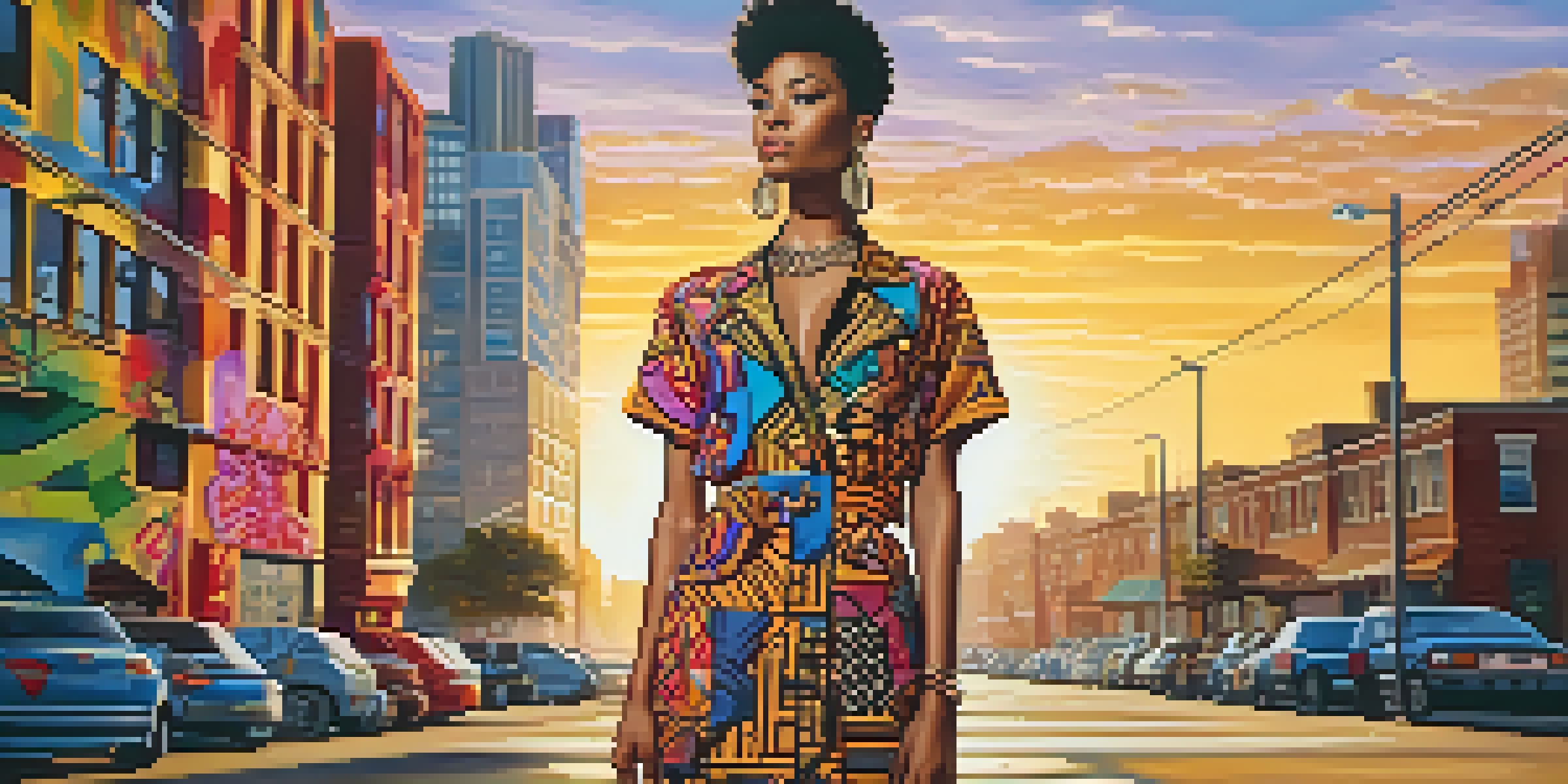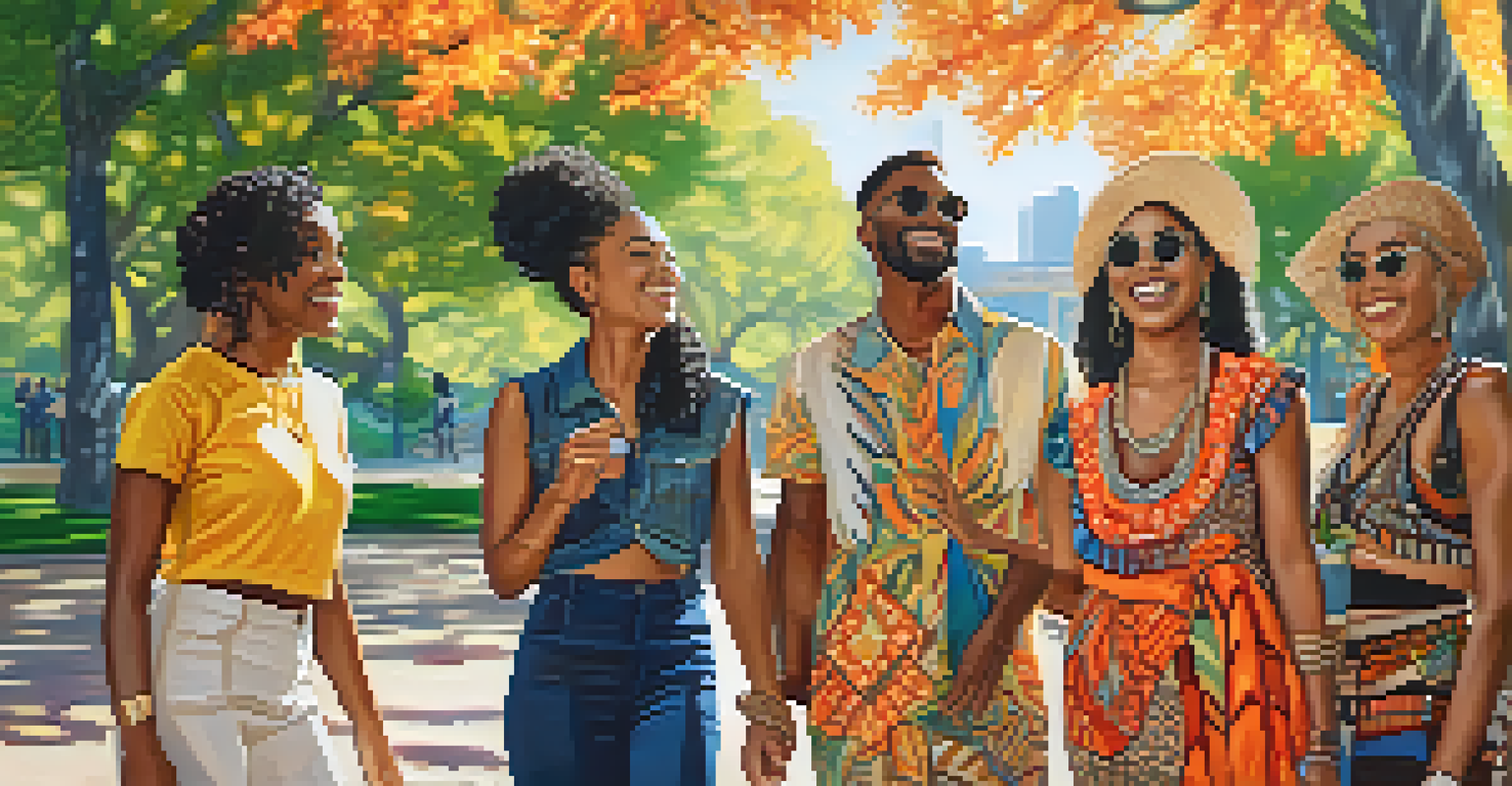The Role of Fashion in Communicating Personal Values and Beliefs

Understanding Fashion as a Form of Expression
Fashion is more than just clothing; it's a powerful means of self-expression. Each outfit we choose can convey messages about who we are and what we believe. Think of it as a visual language that speaks volumes without a single word.
Fashion is the armor to survive the reality of everyday life.
From a simple t-shirt with a slogan to a tailored suit, the choices we make can reflect our personalities, aspirations, and even our social status. For instance, wearing a vintage band tee might indicate a love for music and a connection to a particular era.
Ultimately, fashion allows us to communicate our identities and values, often serving as an extension of our inner selves. In a world where first impressions matter, what we wear can set the tone for how we are perceived.
Cultural Influences on Fashion Choices
Culture plays a significant role in shaping our fashion choices. From traditional garments that honor heritage to modern styles influenced by global trends, our clothing can signify our cultural identity. For example, a sari might represent pride in South Asian heritage, while streetwear could reflect urban culture.

Moreover, cultural events and festivals often dictate specific fashion trends, encouraging individuals to express their cultural values through attire. Think of how vibrant costumes during Carnival or Diwali showcase not just fashion, but also deep-rooted traditions.
Fashion as Self-Expression
Fashion serves as a powerful means of self-expression, allowing individuals to convey their identities and beliefs through their clothing choices.
As we embrace diverse cultures, fashion becomes a bridge that connects us, allowing us to celebrate our backgrounds while also fostering understanding and appreciation among different communities.
Fashion as a Statement of Activism
In recent years, fashion has increasingly become a platform for activism. Many designers and brands use their collections to raise awareness about social issues, such as climate change, gender equality, and racial justice. A prime example is the rise of eco-friendly fashion that promotes sustainability.
Clothes mean nothing until someone lives in them.
Wearing clothing that supports a cause, like a shirt from a brand that donates proceeds to charity, turns fashion into a statement of belief. It shows that individuals not only care about their style but also about the world around them.
This trend reflects a growing awareness that our fashion choices can drive change. Just as our clothes can express our personalities, they can also champion the values and beliefs we hold dear.
The Intersection of Fashion and Identity
Fashion is deeply intertwined with identity, encompassing elements such as gender, sexuality, and social class. The way we dress can signal our alignment with certain groups or communities. For example, a person might choose to wear gender-neutral clothing to express their non-binary identity.
Our fashion choices can also reflect our social status—designer labels might convey wealth and exclusivity, while thrifted finds can symbolize a commitment to sustainability and individuality. Both choices tell a story about who we are and what we value.
Cultural Impact on Fashion
Cultural influences significantly shape our fashion choices, reflecting our heritage and fostering a sense of community and understanding.
Thus, fashion becomes a canvas where personal identity is painted. It allows us to navigate and assert our place in society, showcasing the beliefs and values that matter most to us.
Fashion Trends and Societal Values
Fashion trends often mirror the prevailing values of society. For instance, the rise of minimalism reflects a cultural shift towards simplicity and sustainability, as people seek to live with less. This trend speaks to a growing awareness of consumerism's impact on the environment.
Conversely, the return of bold styles and vibrant colors can signify a collective desire for self-expression and joy, especially in challenging times. The way we dress as a society can indicate our mood and priorities.
As trends evolve, they serve as a reflection of our collective beliefs, revealing what we value at any given moment. Fashion thus acts as a barometer of societal change, making it a fascinating lens through which to understand cultural shifts.
The Role of Social Media in Fashion Communication
Social media has transformed the way we consume and communicate fashion. Platforms like Instagram and TikTok allow individuals to showcase their style and values to a global audience. This democratization of fashion means that anyone can influence trends and express their beliefs through their wardrobe.
Influencers and everyday users alike share their outfits, often accompanied by messages about body positivity, sustainability, or inclusivity. This not only promotes individual expression but also encourages conversations around important social issues.
Fashion and Social Activism
Fashion has evolved into a platform for activism, enabling individuals to express their values and raise awareness about important social issues through their wardrobe.
As fashion becomes more accessible online, it enables a diverse array of voices to be heard. This shift highlights the power of personal style as a tool for advocacy, allowing individuals to convey their values to a wider audience.
Conclusion: Fashion as a Reflection of Self
In conclusion, fashion is a multifaceted medium that communicates our personal values and beliefs. It encompasses our cultural background, identity, and even our stance on social issues. The choices we make in our wardrobe tell stories that go beyond mere aesthetics.
As we navigate the ever-changing landscape of fashion, it’s essential to recognize the power our clothing holds. Each piece we wear can ignite conversations and foster connections, revealing layers of who we are.

Ultimately, fashion serves as a canvas for expressing our authentic selves, making it a compelling aspect of human interaction and self-discovery.